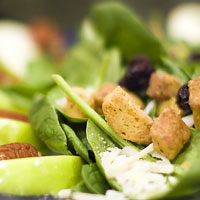6 June 2011
6-12 June 2011 sees the return of the Food Group's popular 'Ask A Food Scientist': your chance to ask an expert any food-related question!
From 6-12 June 2011, the SCI Food Group will be running 'Ask a Food Scientist'. The Group would like to invite all readers to send in their questions, which can cover any food-related topic. A new forum will be set up on 6 June.
The questions will be reviewed by the Committee, and will be published along with their answers on the Group's web pages. This annual event has proved extremely popular in the past. Last year, popular question topics included superfoods, allergies and the problem with eating too many beans! See the links below for last year's questions.
Pink chicken

Pinking in cooked chicken is an issue which has caused problems and perplexed the industry for many years. There are three main causes that have been identified:
1. The chicken is actually undercooked - very rarely the case, but do need to check
2. Somewhere along the production nitrite may have been introduced as an ingredient contaminant, or in the water supply, or from a contact surface. This leads to formation of nitrosomyoglobin. As an example, many cooked chicken suppliers monitor the nitrite content of the water they use as well as checking their other ingredients.
3. Adventitious nitrate in meat and product ingredients, being reduced to nitrite by microrganisms present in the meat and then also leading to nitrosomyoglobin.
On cooking, nitrosomyoglobin converts to a strong pink colour which is fairly stable (although does degrade eventually on exposure to light and oxygen). Other causes of pinking are possible - for example pre-slaughter stress may be a contributory factor, and it is thought that certain components of the chicken feed may be implicated.
Tomato ketchup
Why does my son get hyper on tomato ketchup and not brown sauce?
Does he react to all tomato ketchups or only certain brands? If only to certain types then suggest that you look at the differences in the ingredient lists. It might be worth taking the ingredients from the ingredients list and trying them one by one to see whether they cause a reaction individually. Typically tomato ketchups have as ingredients the following: Tomatoes*, sweeteners, vinegar*, salt, spices, flavourings, onion*, and maybe garlic*. The spices are there to round off and enhance the flavour and can include celery, allspice, cinnamon, cayenne, pepper, ginger, mustard* and others. The types used will differ from brand to brand so hence the earlier question of whether he reacted to certain types - the starred items are also in brown sauce so less likely to be culprits.
Raw tomatoes

It is possible that you have a true allergy to tomatoes, but what your body is reacting against might be denatured by the cooking process. As with any allergy you need to be careful. In this case there are various degrees of cooking, and so you may be fine with canned tomatoes, or tomato paste, but a tomato as a pizza topping will not have gone through anything like the same heat process. We recommend that you have your reaction to raw tomatoes checked by your local Allergy Clinic, as you may also be allergic to other foods and not be aware yet.
